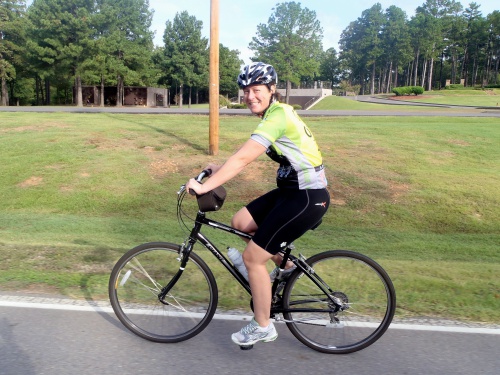Beginning riders usually face a sort of trial by fire, getting into cycling by jumping into the sport and then learning from any mistakes along the way. By taking some time up front to do a bit of research however, can help you avoid those early stumbling blocks and make getting into cycling much smoother and enjoyable.
Getting Into Cycling – The Basic Equipment
The first thing you need, of course, is a bike. Many beginners often go out and spend a lot of money on a top-of-the-line bike right away. This is a mistake. At the beginning, any type of bike is going to suit your needs. This is because you don’t know your habits yet. You don’t know if you’re going to be an avid cyclist or if your interest will wane after the first few weeks. You don’t know if you’ll enjoy riding on trails or road biking or a combination of both. The best thing you can do as a beginner is to save your money until you have a good idea of what kind of riding you’ll be doing.
On the flip side of this is going the route of a cheap department store bike. Getting one of these cheap bikes is also a mistake as they are poorly designed and built and along with breaking and requiring more money to keep them running, ride like, well, crap. If you were to start out on one of these bikes you would most likely give it up right away due to having a miserable experience trying to get the bike to do what you want, namely shift, brake, steer…kind of the essentials to a bike.
When To Upgrade
After you’ve been riding for awhile and know you love riding and want to continue doing more and more of it, it’s then time to upgrade your bike. You don’t need to go over the top but having a well functioning, comfortable bike is going to take your riding to places you’ve never imagined. You’ll simply get a lot of fun and enjoyment out of it.
When you do upgrade, it’s not a bad idea to spend a little extra money on a professional bike fit. Some bike shops offer a fit with the purchase of a bike which can get you started to make sure you’re in roughly the correct position on the bike. Spending more money just to make sure the bike fits you may seem like an over-the-top indulgence, but if you’re going to be riding regularly, you need to make sure you’re not putting any undue strain on your body which could require time off the bike to heal along with the potential for hospital and physical therapy visits.
Gear to Go Along With Your Bike
As far as gear goes, you don’t need to invest in a ton of it right up front, but you will need a few basics. A good helmet is essential for safety and you should never ride without one. Find a helmet that fits well and is comfortable. Other items you’ll need right away are a water bottle, a bicycle pump, and a simple repair kit.
Getting into Cycling – The Riding and Pedaling Part
The proper way to ride is to constantly pedal. Many beginning riders fall into a pedal-coast routine that is not aerobically challenging. The best way to bike for fitness is to find a long stretch of road where you won’t have to brake for stoplights or stop-signs and can fall into a pedal-pedal-pedal rhythm.
Shifting
Learn to use your gears. Many bicyclists ride in a high gear that doesn’t provide the type of resistance that’s going to challenge their heart and muscles. Alternately, you don’t want to be in such a low gear that you find yourself struggling to turn the pedals over. Ideally, you want to ride at a pace that has you making 80-90 pedal rotations per minute.
Stay on Track
Biking is a low-impact sport that’s easy on the joints. That said, you should still start slow in order to avoid injury work up to mileage goals gradually. Give your muscles and tendons time to get adjusted to the particular demands of biking. Plan plenty of recovery time between rides and be sure to stay hydrated and eat well.
Keeping the Motivation
Give yourself challenges to help you stay motivated. Interval training can increase your speed. Charity rides or races will give you a goal to look forward to. Many cities have riding groups where you can meet people as committed to the sport as you are, as well as more experienced riders who can provide guidance. Also riding with even one other person can do wonders for getting you out the door especially if they are at the same level you are and are just getting into cycling as well.
Mistakes are bound to happen when getting into cycling. Often, it’s how we learn. But avoiding a whole lot of mistakes early on will keep you from getting discouraged and help you stay motivated to ride.
